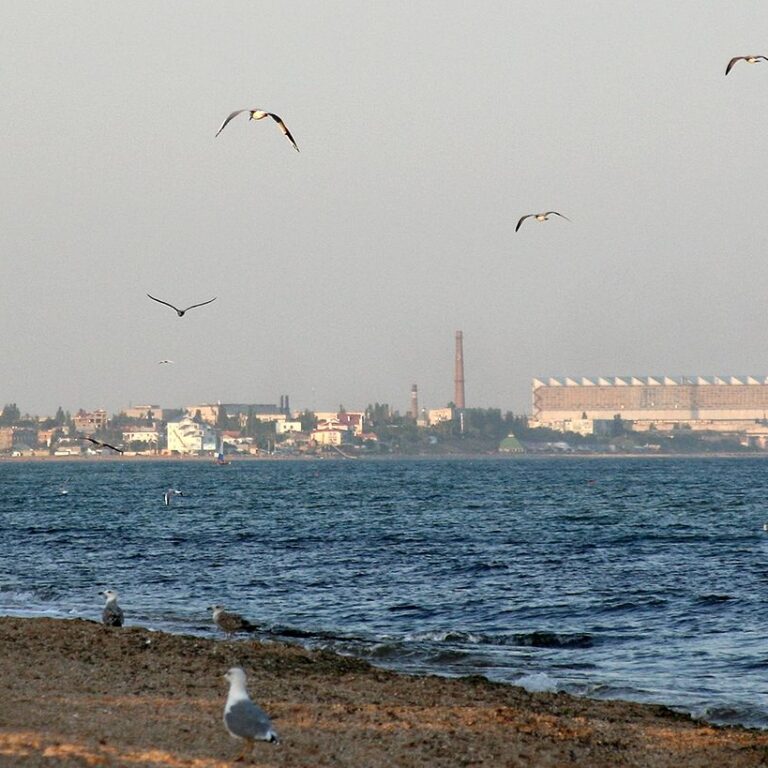The sad experience gained by Europe’s dependency on Russian aggressor’s energy supplies exposed vulnerabilities in the economies of the EU nations and forced them to start looking for alternative sources whose political will would not allow the economic well-being of Europeans to collapse.
Thus, in Germany, following the opening of the floating terminals for liquefied natural gas in Wilhelmshaven, Lower Saxony, and in Lubmin, Mecklenburg-Vorpommern the third floating LNG terminal in the port of Brunsbüttel was launched late January. Regasification will be performed by the Höegh Gannet vessel. It is worth noting that the floating terminal in Brunsbüttel is a temporary solution. By 2026, it is planned to complete the construction of a stationary facility. In the near future, the plan is to supply to the grid through a specialized vessel about 3.5 billion cubic meters of gas, further bringing the volume up to 7.5 bcm.
According to the German Ministry of Economics and Climate Protection, by the end of 2023, Germany plans to launch two more terminals (a second terminal in Lubmin and one in Stade), bringing a total of floating LNG terminals to five and increasing annual LNG supplies by 30 bcm, which will allow Germany to completely abandon Russian gas in 2024. In addition, in 2026 it is planned to complete the construction and put into operation two more stationary LNG terminals in Brunsbüttel and Stade with a total capacity of 21 bcm. To ensure stable supply volumes, a 20-year agreement has already been signed between the U.S.-based Venture Global LNG and Germany’s EnBW for the supply of 1.5 million tonnes (2 bcm) of LNG annually from 2026. In May 2022, Germany’s RWE entered into a memorandum of intent to purchase 3.1 bcm of LNG annually for 15 years from the Port Arthur LNG terminal in the United States. Qatar’s proposal to use supplies from the American Golden Pass terminal with a capacity of 15.6 million tonnes (21.5 billion cubic meters) is also taken into account. Its three stages are set to be launched in 2024-2025.
It is worth adding that great efforts are being made by the German government to develop wind and solar energy. By 2030, the country plans to receive 80% of its electricity off renewables. To reach the target by 2030, Germany will have to commission 30 GW of capacity annually and install six wind turbines per day. According to BASF, the Net Zero Accelerator is installed on average up to one turbine per day with 6.5 GW per year, but the rate will increase.
According to gas market experts, at the beginning of 2023, Russian gas supplies to the EU plunged the most, by almost 2.5 times. In 2022, Gazprom supplied only about 61 bcm of gas to the EU, compared to 146 bcm in 2021. The increase in gas prices in the second half of 2022 also reduced supplies to Turkey by 19.5%, to 21.5 bcm. Last year, Gazprom’s exports increased only to China, where on certain days of December last year the volumes of deliveries exceeded those specified in the contracts. In 2023, Russian gas exports are forecast to shrink even further. Now Gazprom supplies the European Union with about 68 mcm per day, and it is impossible to significantly increase this volume unless the Yamal-Europe gas pipeline restarts operations and transit via Ukraine is increased – which is practically impossible in the current political situation.
Urgent and important is the beginning of the transformation of the European energy sector involving the rejection of hydrocarbons. In order to fulfill the decisions of the European Union towards the transition to the so-called “green” energy, the EC approved a project worth EUR 5.4 billion, which will be jointly financed by 15 EU countries. Thirty-five largest companies will participate, including Alstom and Daimler. Within the framework of the project, it is planned to work out technologies for hydrogen production, storage, transmission, and distribution. It is planned to start in 2025 and complete by 2030 the construction of two branches of the H2Med hydrogen pipeline. The European Commission, France, Spain, and Portugal have agreed on a roadmap for laying the pipe from the Iberian Peninsula to France.

The EU intends to increase by 2030 hydrogen production by 2030 to 10 million tonnes and import another 10 million tonnes. This hydrogen should cover the demand of industrial consumers in European countries through creating a system of strategic corridors for transmitting hydrogen from the west to the east of Europe.
The actions of the European Union in this regard due to the war unleashed by Russia and the imposition of sanctions frustrate the ambitious plans for the development of the Russian hydrogen industry, which planned to occupy 20% of the world hydrogen market by 2030. According to the Ministry of Energy of the Russian Federation, the benchmark for the hydrogen export potential was reduced from 9.5 million to 4.5 million tonnes, while Germany, Japan, and South Korea were dropped from the list of main importers. The forecast for actual annual exports has been reduced from 2.2 million to 1.4 million tonnes by 2030.
Experts with the GMF (German Marshall Fund) analytical center, recognized as an undesirable organization in the Russian Federation, came to the conclusion that China, which is actively investing in the development of its own hydrogen energy, in the future may become the world’s main producer of this new type of fuel.
Thus, we see that the systematic shift of the EU countries away from the dependency on energy supplies from the aggressor power continues.
The Serbia-Bulgaria gas pipeline construction project, which was announced by the leaders of Serbia and Bulgaria in early February, deserves special attention. According to available data, of the 170 kilometers of the pipe’s length, 109 kilometers will pass through Serbia. The pipeline with an annual capacity of 1.8 bcm will allow Azerbaijan’s gas to flow to Western Europe, as well as provide Serbia with access to liquefied gas from ports in Greece. The EUR 85.5 million project will receive €25 million from the European Investment Bank, as well as EUR 49.6 million in co-financing from the European Union. Serbia will provide the rest of the funding needed to complete construction. The pipeline is part of the EU’s Southern Gas Corridor initiative, which aims to reduce Europe’s dependency on Russian gas.
The main source of supply will be the Shah Deniz gas field located in the Caspian Sea on the territory of Azerbaijan. Bulgaria and Serbia, even before Russia’s invasion of Ukraine, tried to get rid of dependency on Russian supplies. In 2009, the two countries were already affected by a dispute between Russia and Ukraine over gas prices, which led to a reduction in flows. Sophia then quickly established a connection with Greece to start receiving gas from Azerbaijan.
At the same time, according to experts, taking into account the fact that gas from Azerbaijan comes through Turkey, and Turkey announced the creation of a gas hub for trading gas, which is planned to be received, including from Russia, there’s a possibility that Russia’s gas supply capacities will be involved to cover the EU demand, which in turn will allow Russia to circumvent economic sanctions imposed on the aggressor power. Theoretically, analysts do not rule out such a possibility, so time will tell how things will work. But at the moment, due to tragic natural circumstances, Turkey was forced to temporarily postpone plans for the gas hub project.
Author of the material: expert-correspondent of the ARC, Leo Grahl







